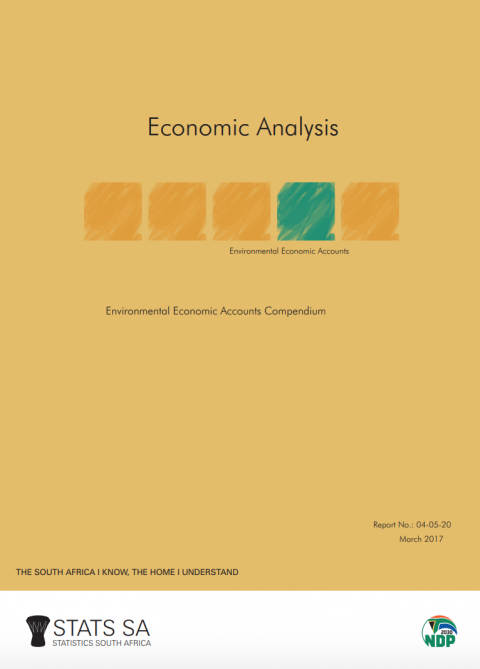Environmental Economic Accounts Compendium

Document Summary:
This report is based on the environmental economic accounts for energy, fisheries and minerals. Several indicators are included to show the interaction between socio-economic activities and their reliance on natural resources. A separate Excel workbook is available online for detailed data in respect of the three accounts mentioned.
Energy key findings are based on the energy balances compiled by the Department of Energy (DoE). The DoE is mandated to ensure the secure and sustainable provision of energy for socio-economic development. The energy accounts show the resources involved in the production and consumption of non-renewable and renewable energy. The National Development Plan (NDP) envisages that by 2030 South Africa will have an adequate supply of electricity and liquid fuels to ensure that economic activity and welfare are not disrupted, with measures to mitigate negative effects on the environment and to promote sustainable development.
The key findings for fisheries are based on production and consumption in the fishery sector. The Department of Agriculture, Forestry and Fisheries (DAFF) is mandated to ensure the sustainable use of natural resources through the conservation, protection, rehabilitation and recovery of natural resources within ecosystems. The environmental economic accounts for fisheries show the opening and closing stocks for selected fisheries and the total allowable catch (TAC) for abalone, Cape horse mackerel, hake, South Coast rock lobster and West Coast rock lobster. The main challenge in fisheries is to find the optimal balance between the potential social and economic benefits of the fishery industry, protecting the integrity and quality of the country's marine and coastal ecosystems, and addressing transformation in the sector.
The Department of Mineral Resources (DMR) assumes the custodianship of all mineral resources in South Africa on behalf of its citizens. To this end, the DMR promotes and regulates the minerals and mining sector for transformation, growth and development, and ensures that all South Africans derive sustainable benefit from the country's mineral wealth. The key findings for minerals focus on coal, gold and platinum group metals (PGMs). PGMs and gold are among the largest sectors of South Africa's mining industry in terms of employment, investment and revenue generation. In the national energy plan, coal remains an important component of the country's future energy mix and requirements.
The twelve outcomes identified by the government include environmental assets and natural resources that are well protected and continually enhanced in order to improve the quality of life and to promote sustained economic growth. The indicators identified show links between the use of natural resources and the socio-economic environment.
Link to an External Document:
